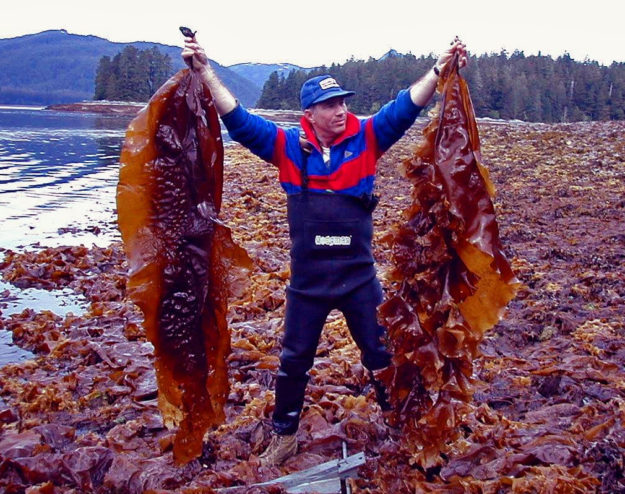
Alaska’s mariculture industry is in its infancy, compared to other regions of the world, but it has the potential to be much larger — maybe worth as much as $1 billion within three decades.
Markos (“Mark”) Scheer is a board member of the Alaska Fisheries Development Foundation, which published the first phase of a study called The Alaska Mariculture Initiative in 2015. He discussed his organization’s hopes for mariculture in front of the Sitka Chamber of Commerce last Wednesday (April 19).
Scheer’s message was straightforward. There’s money to be made.
“The plan, the vision that we decided, is to create a billion-dollar industry in 30 years. Now it sounds like a big target and high aspirations, but when you think about the amount of area suitable for mariculture in Alaska, it’s really not that high of a target,” Scheer said. “For example, there are about 35,000 miles of coastline in Alaska. If we developed 1-percent of that coastline and utilized it for producing various species, whether it be oysters or mussels or kelp or things like that, it has the production capacity to exceed the rest of the continental United States. That’s about 450,000 acres total in the state. It’s a fairly small area by percentage and total, but the production capacity — because we have such wonderful resources, clean water, and existing infrastructure — is entirely attainable.”
Scheer stressed the importance of the state’s existing infrastructure in ramping up mariculture: Seafood plants are idle during the winter months, when the processing of some mariculture products is needed, there is freezing capacity, transportation, and access to markets.
Scheer called mariculture “the low-hanging fruit” of economic opportunity in Alaska. He said that worldwide the harvest of kelp was a $20-billion dollar industry, and showed a video of kelp farmers in Maine who were marketing kelp as “the new kale.” He said that the United States supplied only 15-percent of the 4.4 million tons of oysters farmed each year.
The Sitka Chamber was generally receptive, but there were some long memories in the audience. A mariculture permit application in Sitka Sound around two decades ago encountered significant opposition from residents who already used the proposed area for subsistence or recreation.
Scheer thought barriers could be removed by cultivating a different product.
“Most of the recreational uses of coastal plans in Southeast takes place between May and September,” Scheer said. “I would say the vast majority of that, the tourist industry. Kelp is seeded in September and harvested in April. I think in reality the conflict for that space is going to be pretty minimal, number one. And number two, relative to the amount of area, we’re not talking about covering every coastline with kelp farms.”
The state legislature created the system for mariculture leasing in 1988, and Scheer describe its status now as “a cottage industry.” Nevertheless, statewide production topped $1 million in 2014. Scheer cited Oceans Alaska and Hump Island Oysters — two Ketchikan businesses — that were both scaling up.
Scheer thought the economic climate in Alaska was different now than when Sitkans opposed mariculture in the sound.
“The potential for it as another economic development opportunity for the state — for whatever reason — is now much more on the radar,” Scheer said. “It’s due in no small part to the realities of the Alaska budget situation. You’ve got to look to build opportunities. You know there isn’t a timber industry. I think a lot of the resource extraction industries are having a difficult time for any number of reasons. And this is an industry that is supplemental to what currently exists and frankly, is pretty environmentally-friendly.”
And finally, in case there was any confusion, Scheer emphasized that mariculture was not salmon farming.
“Commercial fishing is a pillar of our economy and always will be,” Scheer said. “We don’t grow anything with fins.”
Note: Alaska Governor Bill Walker created the Mariculture Task Force in 2016. Visit the task force website for committee members and meeting schedules.
Robert Woolsey is the news director at KCAW in Sitka.




